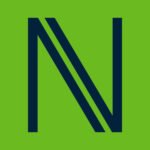What’s inside:
- AI Camera Technology automates inventory tracking with real-time data on usage, batch numbers, and expirations.
- Healthcare Data Analytics delivers actionable insights to optimize efficiency, reduce costs, and enhance patient safety.
- Future Potential and Proven Benefits: Revolutionizing stock management, loss prevention, and supply room optimization in hospitals while delivering measurable results, including a 30% improvement in charge capture and denials claims and a 97.3% reduction in expiry wastage.
In recent years, the healthcare sector has experienced a profound transformation, fueled by a shift toward healthcare data analytics. At the forefront of this change is AI camera technology. Initially embraced in clinical systems to enhance surgical performance, it is now being adopted by health-tech companies to optimize operational workflows, reduce manual tasks, and drive greater efficiency.
This white paper explores the rise of camera technology as a pivotal component of the healthcare data analytics revolution. Its integration into inventory management systems is transforming the healthcare supply chain by delivering unparalleled digital vision and operational insights.
What is AI Camera Technology?
The use of cameras and computer vision in the healthcare supply chain involves the collection, processing, and analysis of product data. It automates the identification and tracking of medical supplies using the powerful combination of camera technology and artificial intelligence (AI).
This new technology is able to interpret and understand visual information, extract key elements, and convert them into digital data.
What is healthcare data analytics, and why is it important?
Healthcare data analytics involves the collection and analysis of data to deliver actionable insights. By utilizing AI camera technology and advanced computer vision algorithms, it automates data capture, identifies patterns, and enhances decision-making across clinical and operational domains.
AI cameras collect visual data and use it to streamline inventory tracking, offering real-time insights into product usage, batch numbers, and expiration dates.
This technology is essential for improving efficiency, reducing waste, enhancing patient safety, and optimizing costs. Solutions like IDENTI’s Snap&Go AI camera system transform manual processes into seamless, data-driven workflows, enabling smarter decisions and superior outcomes.
Key Components of AI Image Recognition Process
AI computer vision systems utilize advanced algorithms that help them to recognize, identify, extract, and process important information stored in visual data. This is the process, as applied to healthcare supply chain management:
- Image Acquisition: Capturing images of product packaging or labels, using a camera sensor device.
- Preprocessing and Model Training: AI software prepares images for analysis, and then utilizes advanced machine learning (ML) algorithms and models, that draw upon vast reference datasets, to recognize patterns and specific objects or features within the image.
- Feature Extraction: Identification and extraction of relevant features from the images, such as the product reference number, batch/lot number, expiry date, and more.
- Classification: Using the trained models to classify new images based on their learned patterns and features. By referencing its vast data bank, the system is able to identify all products, even where only partial data is captured.
The application of this technology is now being introduced with pioneer products. Let’s look at how digital camera technology is being used in healthcare inventory management.
The Challenge of OR Data Collection
As the primary driver of healthcare revenue, the surgical setting requires careful oversight. Yet for many healthcare organizations, operating rooms and procedural areas remain a mystery when it comes to the management of medical inventory. Traditional technology, such as barcode systems, have failed to provide the accurate and comprehensive data needed to run an efficient and revenue-optimized OR.
A new AI Vision point of use supply documentation device recently emerged on the scene, and has been successful in boosting surgical supply data quality.

Using Camera Technology for Point of Use Supply Tracking
IDENTI Medical is the leader in AI and camera technology for healthcare inventory management. Our pioneering use of camera technology in perioperative documentation has transformed a once error-prone process into a swift, smooth workflow.
Snap&Go is a unique AI camera system that has clinical, operational and financial benefits:
- Reduces labor: The camera technology reduces the time taken to enter an item into the system down to 3 seconds.
- Automates item identification: Access to a vast, virtual product database, and processing via machine learning algorithms, ensure every consumed item is identified and verified.
- Accurate charge capture and automated revenue code allocation: Full data integrity at the point of use and advanced data processing ensures smooth RCM and optimized case revenue, even for consigned, bill-only, and off-contract items.
- Comprehensive usage data: When consumption data is correct it has a ripple effect, supporting data-driven inventory management and procurement.
- Full interoperability: Fully integrated systems ensure optimized EHR records, ensuring comprehensive clinical records and robust recall management.
This pioneering product has transformed and optimized surgical supply data, resulting in cost-reduction, waste-reduction, and inventory reduction. So, what are the other applications that can camera technology be used for in relation to the healthcare supply chain?
Future Applications of Camera Vision Technology
AI Camera technology and healthcare data analytics are ideally suited for integration into hybrid technology models, offering enhanced functionality and efficiency in inventory management.
Here’s a look at how camera technology is poised to transform hospital inventory management in the near future.
- Stock management: RFID-infused camera technology can be strategically positioned in storerooms and can read all product tags within range. This facilitates the automated replenishment and item level management of stock stored on shelving.
- Loss reduction: Cameras can be fitted to drones and used to patrol supply areas, improving visibility and preventing loss by misplacement, and theft. The addition of RFID would give the drones enhanced inventory tracking capabilities, such as monitoring the expiration dates of products.
- Kit management: Digital AI camera technology can be used to monitor the contents of loaner kits before and after surgery, ensuring that medical records and charges reflect actual usage, minimizing documentation time and preventing disputes.
- Supply room optimization: Camera technology can be used to optimize supply spaces, analysing staff interaction with storage areas and individual SKUs to optimize the room layout, making the most commonly used items more easily available.

Integrating AI Camera Technology into Healthcare Data Analytics for Better Insights
While smart AI camera technology is responsible for tracking inventory, it relies on advanced software to process, verify, and analyze captured images or videos.
The partnership of camera technology with AI is very powerful as it ensures full and correct stock data is fed into the system for advanced processing and healthcare data analytics.
The software, powered by Healthcare Data Analytics Insights, is designed to:
- Item verification: Identify items and verify all product data, and document full SKU data in the system, even where only partial product data has been captured.
- Replenishment: Communicate with the ERP in relation to stock levels, ensuring automated and timely replenishment.
- Optimize revenue: Ensure internal workflows, such as RCM/medical billing are fed the consumption and charge capture data required to flow smoothly.
- Real time data: Provide real-time metrics so that all supply chain parties can view stock data and locate items with ease.
- Reports: Generate push reports that deliver vital data on operational matters, such as expired and recalled items, signposting staff to issues that need attention and proactively solving inventory issues.
- Standardization: Flag up areas of inefficiency in terms of product variance, case cost, physician preference etc.
- PAR optimization: Uses trend analysis and prediction models to recommend adjustments to the min, max and PAR levels of individual SKUs per PAR location, in order to optimize availability, while minimizing waste and costs.
- Healthcare Data Analytics: Provide insights that are business intelligence and support the management and planning of medical supplies in the short, medium, and long term.
AI camera technology offers a powerful solution for transforming healthcare supply chain management. It provides an efficient way to track inventory, improving data collection accuracy and providing valuable data insights.
IDENTI is leading the way with point of use camera technology that optimizes operational efficiency, reduces costs, and enhances patient care.
Are you looking to unlock the potential of camera technology in your healthcare supply chain? Contact us for a demo of our pioneering Snap&Go AI camera technology.






